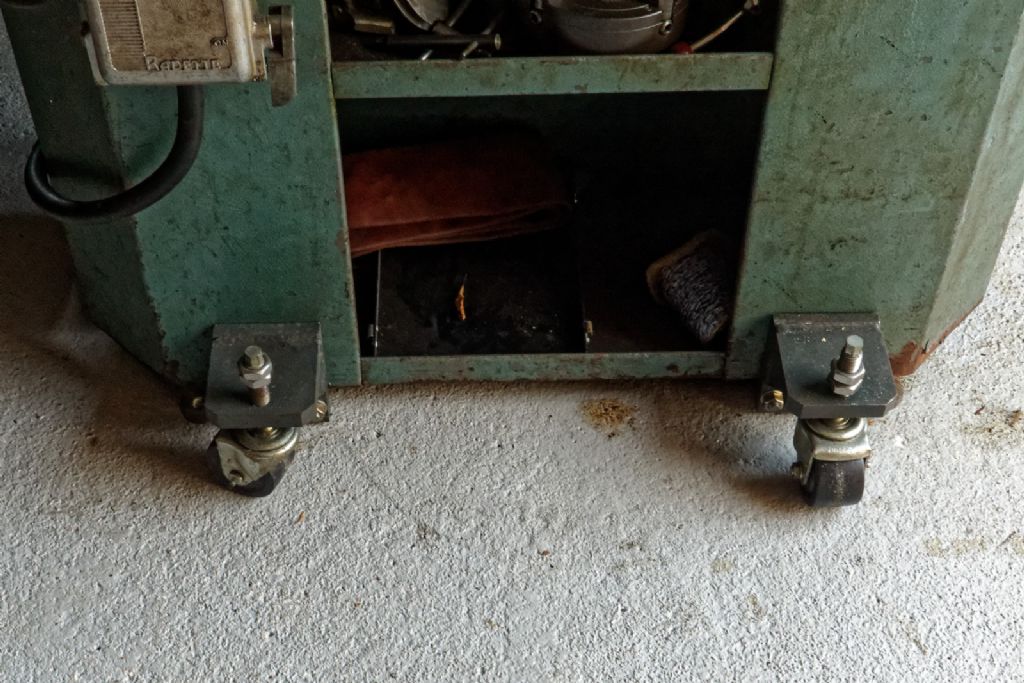I can tell you since rebuilding machines is my hobby (I mean grinding, scraping, alignment not just clean and paint), and since concrete cutting, breaking grinding is my profession where I've had to grind plant room/water tank plinths to +/- 2mm over several metres, and because when I'm in the process of rebuilding (but not the alignment phase) a lathe will typically sit on casters,
1. Concrete isn't flat. Even a properly laid power-floated floor is very unlikely to be flat enough that you can move a machine sitting on four points and not have it twist. For your average tamped/trowelled slab – no chance.
2. If you sit a machine like a Bantam on casters and move it any amount, the twist of the bed will change. As a matter of fact, I have sat a bantam on casters whilst in the rebuild process and ran a test whereby I had a dial gauge reading bed twist whist it was being wheeled around and that dial gauge was swinging like a metronome. Here it is on it's 6" 200kg casters after I wheeled it out into my garden for a photo.

So if you're asking can you use a lathe that's on casters the answer is – certainly you can. If you're asking can you move it and expect it to hold alignment, even to move it one way then move it back – certainly not. For most people it's not really an issue because their lathes are not aligned anyway.
Edited By Pete Rimmer on 19/01/2023 22:11:31
Niels Abildgaard.






